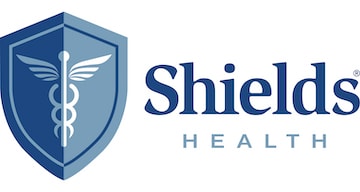Boston Business Journal – Julie M. Donnelly, Reporter
Tom Shields Jr., president of Shields Health Care Group, sees opportunities in partnering with hospitals. – W. Marc Bernsau
Shields grows as MRI outsourcer to hospitals
Shields Health Care Group, the Quincy-based provider of radiology services, was once thought of as a competitor to hospitals’ higher-priced MRI centers. But Shields is increasingly becoming a partner with hospitals instead as health care providers look to rein in costs.
In a fee-for-service world, MRI procedures can be a cash cow — with high reimbursement rates at many hospitals, that help subsidize other care that isn’t paid as well.
But health insurers are increasingly encouraging “global payment” arrangements, where hospitals are put on a budget for each patient. With this approach, radiology now becomes a cost center.
Shields Health Care has done four joint ventures with hospitals in the past two years and has at least two pending deals in the wings. Since 2009, when Blue Cross Blue Shield of Massachusetts launched its Alternative Quality Contract, a major “global payments” initiative, Shields has added a total of nine partnerships. They include Berkshire Medical Center, Winchester Hospital, Tufts Medical Center, Lowell General Hospital and Cape Cod Hospital.
“This market has a tremendous amount of turbulence and upheaval, but that’s created a terrific opportunity for us,” said Tom Shields Jr., the company’s president. “We’ve seen a lot of consolidation among hospitals, and they are gravitating towards new solutions that will provide high quality at an affordable cost.”
Shields estimates that its average price for an MRI visit is $563, versus $743 for a community hospital and $1,153 for an academic medical center.
The company is able to cut costs through economies of scale: Shields has standardized scheduling, billing, workflow and throughput procedures at its 25 imaging centers that can speed up the scans, and getting paid for them. Another thing the company did to rein in costs is to bring its equipment servicing in-house. It’s faster and 30 percent cheaper than relying on the manufacturer to service the pricey machines, Shields said, and in-house technicians have an incentive to keep the machines running because when they are down it affects the company’s bottom line. Shields — a privately held, family-run business — declined to disclose revenue.
Through these partnerships, Shields effectively purchases the hospital’s MRI, CT or PET radiology equipment, taking it off the hospital’s balance sheet and freeing up that cash. In some cases, Shields has upgraded or replaced aging equipment. Shields collects all the insurer reimbursements and co-payments, and revenues are shared.
“If you can’t do something perfectly, then you just shouldn’t do it,” said Jody White, CEO of Lowell General Hospital. “We were doing OK with our in-house MRI center, but this is all Shields does and they can deliver at a lower cost than any hospital.”
White, whose hospital participates in Blue Cross’ AQC program, says that in “global payments” arrangements, there will simply be fewer MRIs as doctors look to other cost-effective diagnostics and preventive care. That means expanding the geographic area where Lowell General draws its patients.
Shields has also recently benefitted from increased transparency and consumer incentives around costs. Patients with high deductibles or co-pays are now looking to reduce out-of-pocket expenses, and new tools such as Harvard Pilgrim Health Care’s Save On Medical allow patients to compare local health care providers’ costs. Hospital executives recognize reducing consumers’ out-of-pocket expenses may prevent an outflow of patients to Shields’ standalone centers, or to competing hospitals with lower-cost offerings. In addition, as the popularity of tiered and limited network health plans increases, hospital partnerships with lower-cost vendors could help them stay in preferred lower-cost, high-quality tiers, making those hospitals more attractive to newly cost-conscious consumers.
